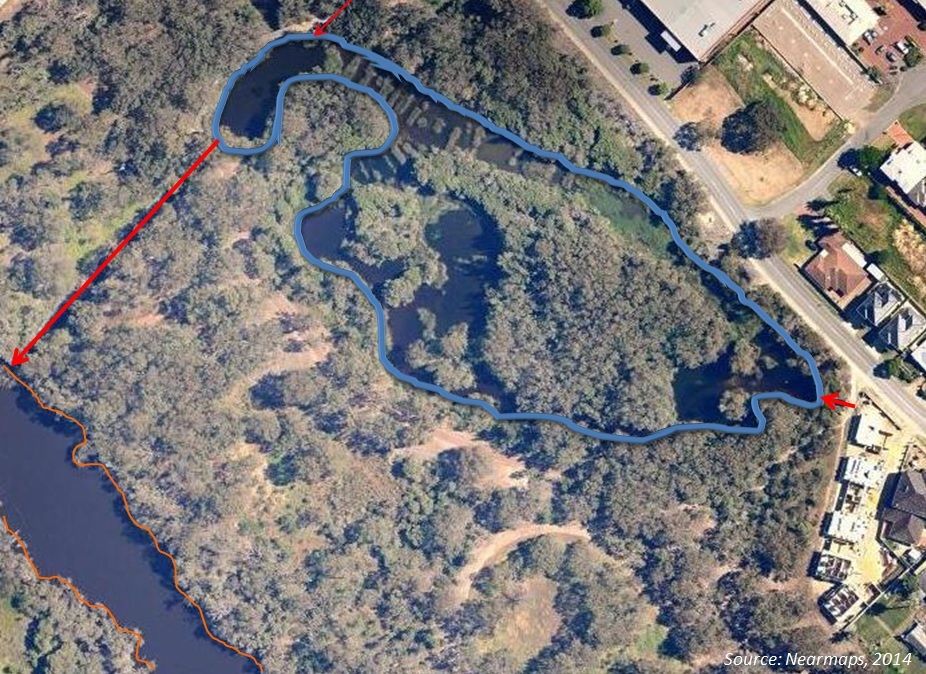
Project Details
Liege Street Wetland focus areas Located on the Canning Plain, a priority catchment in which to reduce nutrients.
WSUD Category: Constructed wetland, Retention of native vegetation, Wetland/lake algae management
| Criteria | Information |
|---|---|
| Development Type: | Public Open Space |
| Function/Driver: | Water quality |
| Government Area: | City of Canning |
| Site Context: | Contamination |
| Year Completed: | 2005 |
Located at Carden Drive in Cannington the constructed wetland was the first substantial project of the Drainage Nutrient Intervention Program (DNIP). The project has been successful in reducing nutrients entering the Canning River from a major urban catchment with an area of 530 ha.
Liege Street Wetland focus areas:
- Located on the Canning Plain, a priority catchment in which to reduce nutrients;
- Liege St main drain catchment is ~530 ha mainly urban but also commercial and a small area of industrial land use;
- Site located in the Canning River Regional Park – before the wetland was built two linear Water Corp. main drains discharged directly into the Kent Street Weir pool of the Canning;
- Project Partners – Swan River Trust, City of Canning, SERCUL, Two River Catchment Group, Water Corp and DEC;
- Constructed in early 2004 and initially planted late 2004-05.
Objectives:
- Improvement in water quality in low flows;
- Reduce other pollutants;
- Improve habitat and amenity;
- Provide recreational and educational opportunities;
- Monitor and evaluate treatment efficiency.
Original Results:
- 27% reduction in TN during baseflow ~500kg;
- 45% reduction in TP during baseflow ~230 kg;
- removal of metals from forebay.
Restorative phase:
- Loss of ~70% vegetation due to the development of sulfidic sediments;
- Sediment removed and basin levels raised in 2012 providing seasonal aeration of sediments and improved vegetation coverage.
Results since restoration (median values):
- ~13% reduction in TN conc. 2012-15;
- ~25% reduction in TP conc. 2012-15;
- Results impacted by reduced wetland retention and vegetation coverage, expect further improvement.
